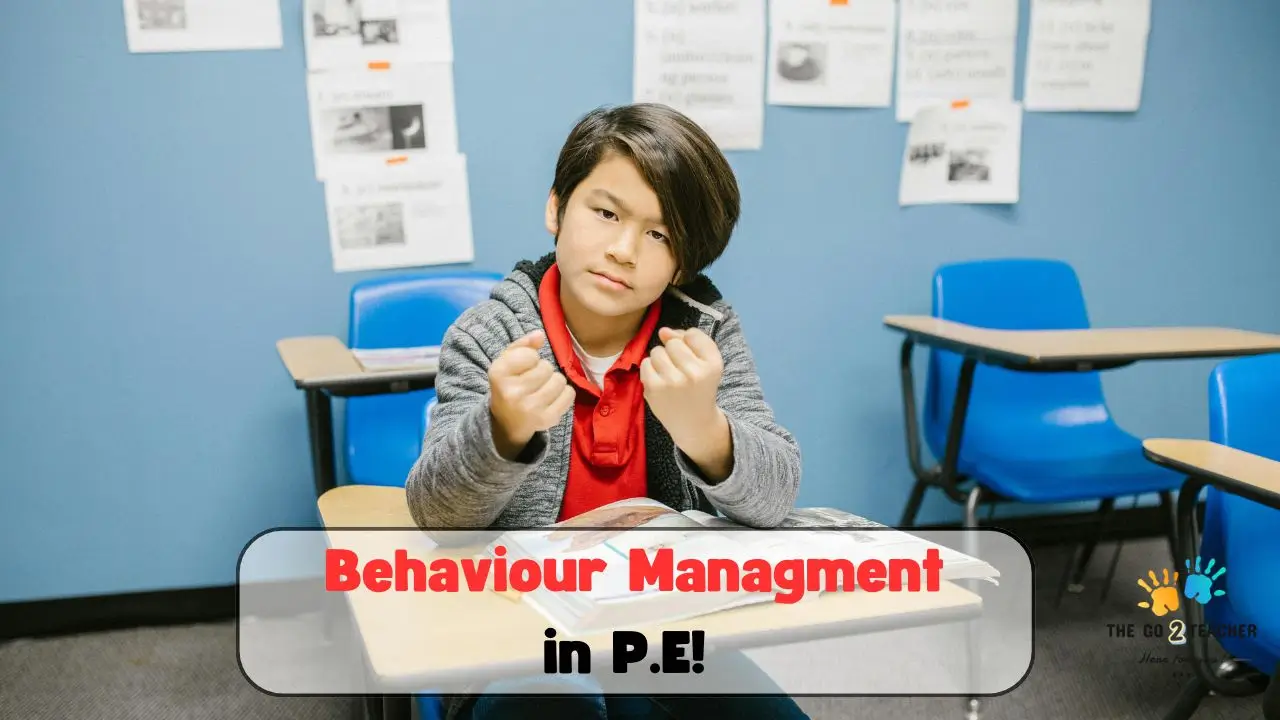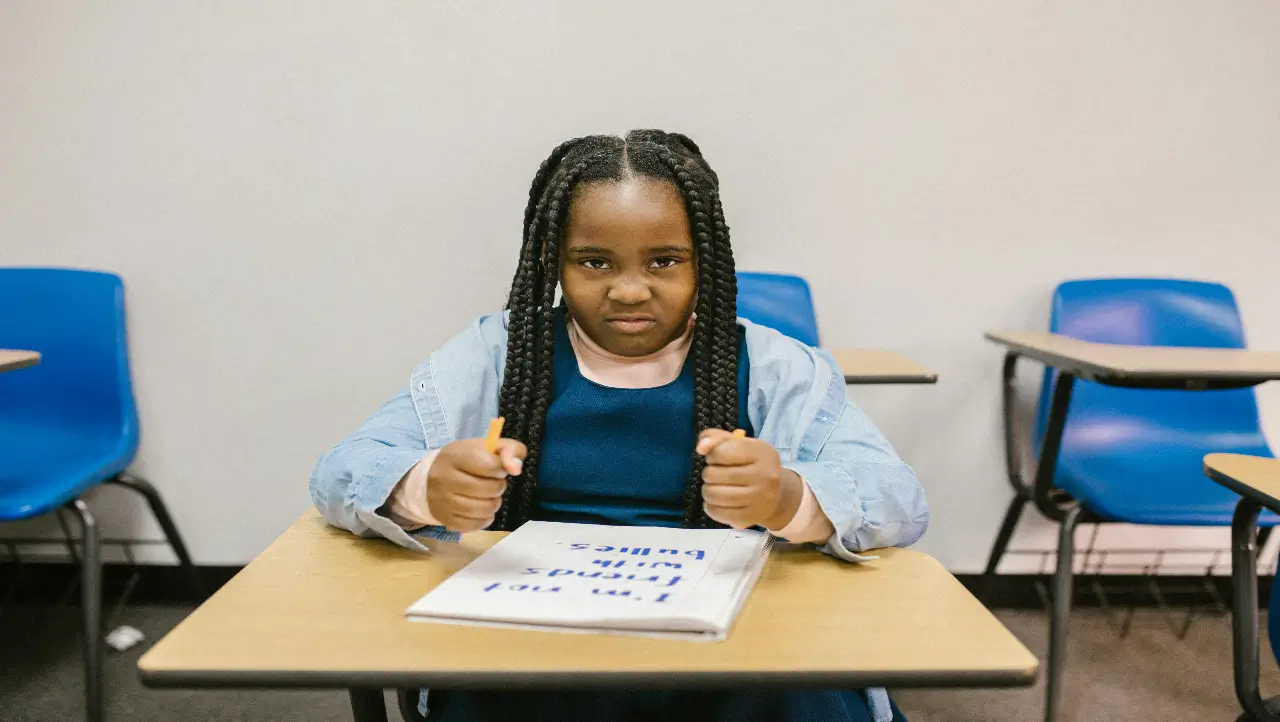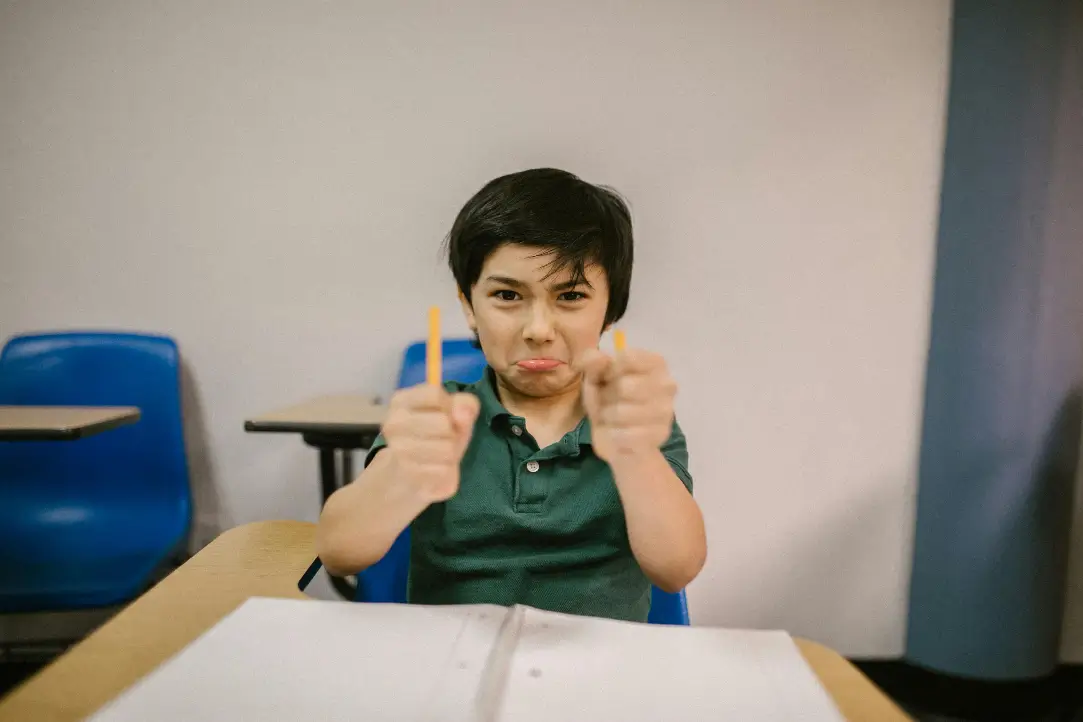P.E Behaviour Management| Treat P.E Space like a classroom!
Jul 10, 2024


Kas
One of the keys to success for any subject or age group that you will teach in your education journey, is ensuring you establish routines and structures when in the classroom or learning space. These routines underpin everything that happens in your classroom and is critical to ensure teaching and learning can take place on a regular basis.
Similarly, If we had a world without laws and social norms things would slowly turn into chaos, without these guidelines on how to behave or interact with others we would not be a functioning society. This is no different to life in a classroom…. But you already know this, so why is this article around routines and expectations?
We agree that this is a basic part of teaching, this principle gets overlooked when we enter the physical education space. Whilst we don’t teach P.E in a classroom that does not mean we should look at our P.E learning space any different, even if it is outdoors or in a large gymnasium. By not treating the P.E learning environment like a classroom, teachers can find that taking their class out for a P.E lesson can quickly become a chaotic endeavour and make what should be an enjoyable experience anything but that.
I seen this happening quite frequently and it can be a big contributor as to why many teachers don’t take their students out for daily physical activity or fitness. This is concerning as we now know the evidence is clear on how movement during the school day is not only beneficial for student health outcomes but also has a direct relation to the academic success of our students.
If you would like to read about this in more depth- check out my article on ‘Daily Physical Activity’.
This issue is also common with early career teachers who are eager to get into fun activities and topics during P.E but faily to spend sufficient time scaling back the learning for the time being, so they can focus on creating positive routines and structures. Early career teachers quickly find that they spend a lot of their time focusing on behaviour management during P.E rather than teaching which can have a direct impact on their outlook of HPE as a whole and effect their ability to teach quality lessons of a regular basis.
“The ultimate goal of classroom management should not be on simple obedience, but on having students behave appropriately because they know it’s the right thing to do and because **they can understand **how their actions affect other people” (Hardin, 2008, p. 142).
In this article, we will explain why it is important to treat your P.E space like a classroom, how you can do that effectively and how a little investment of time can create a better learning environment for you and your students.

What Do You Mean, Treat It Like A Classroom?
When teachers start the year in a new year level, classroom or subject area typically the first few weeks have a strong emphasis on expectations and classroom rules. We establish what is acceptable and what is not. We explain the process of what happens when rules are broken and the consequences that are attached to those behaviours. This is a critical part of establishing a positive classroom culture and one that is centred around respect and safety.
During this period of time allow students to adjust to these new expectations and sometimes we typically have one or two students who shall we say ‘test’ these expectations. Allowing us to follow through on pre-discussed consequences and thus further reinforcing to everyone in the learning environment that we need to abide by these classroom rules. All these elements is what establishes great routines and clear expectations moving forward, but without an investment of time with this being done- it becomes really hard to establish this later down the track when unwanted and negative norms have been formed.
Typically, after a few weeks, these expectations become less of a focus and students now fully understand what is expected of them. This is when true learning can begin and we can transition our focus directly on content-specific focuses such as engaging in activities and generally enjoying our teaching and learning journey.
This process takes a few weeks and is an investment of time for students and teachers. Student-centred rules and expectations should always include input and direction from the students themselves, this should allow for greater success overall in this process and show students that they are a valuable part of the process. Providing students with autonomy in how they want their class to run and giving them buy-in as they have created this structure alongside their teacher.
This time investment and rule setting is what ensures a smooth and successful year, with clear expectations for your students.
“If the goal is to have children take responsibility for their behaviours, teachers must allow students to make decisions about what is right and wrong” (Hardin, Effective Classroom Management 2008, p. 143).
When we teach P.E, at times this investment of time spent on rule setting and expectations is generally not done. Maybe we assumed that the rules in the classroom should carry over into every other learning space, but in reality, this does not happen unfortunately. Students, especially young ones don’t associate a different learning space with the rules that were identified in the classroom so thus this process needs to happen again but being adapted and catered for a physical education space.
This is something I do for my primary classes even some middle school classes, depending if I have taught them before. I will spend the first 4 weeks on a unit of ‘Group Dynamics’ which focuses on team work, and supportive team culture and it is used as a medium to teach rules and expectations.
Just like in a classroom setting we discuss and establish the following in our P.E lessons:
- How do we enter a P.E learning space?
- How do we leave a P.E learning space?
- Who packs up and when do we pack up?
- How do we treat others during a game?
- How do we handle disagreements respectfully?
- What do we do if we need a drink or toilet break?
- What are fair consequences for students who break the determined rules?
- Where do we sit/stand during instruction time?
- How do we form teams?
These are just a few things we cover. All of my rules and expectations generally stay the same year to year and a lot of my students already know these expectations. I do believe it is important to go over these expectations each year and to make changes if necessary, depending on the context of your students.
To those who don’t do this already, it may seem like a lot of work but I promise once you have consistent protocols and awareness around these key parts of the lesson, everything will run smoother, you will use your voice less and allow your students to become self-directed as they will already know what to do depending on the issue instead of always relying on you to manage their problem or issue.
For younger students or new classes, you will need to be persistent in re-enforcing your expectations as with an open space like P.E the challenges you will face in order to establish these expectations may be harder that it would be in a classroom space. Students tend to become distracted and for lack of a better word a ‘little crazy’ when they come to P.E lessons as they have been stuck behind a desk in a room for most of the day and now they are excited to move around in a new and open space using a variety of equipment. Managing these emotions appropriately through reinforcing rules and expectations will be a massive key to the success of your HPE lessons.
“Effective classroom discipline… should be a means of helping students become caring, ethical individuals” (Hardin, 2008, p. 147).
What are the outcomes of a unit centred around rules and expectations:
- A much safer environment for students
- Ensuring equipment and spaces are respected and maintained
- Provides students with autonomy and responsibility
- Allows teaching and learning to take place easily
- Creates a chaos free environment
- Students cooperate more effectively and solve problems peacefully

How Can You Incorporate These Rules Into Your Lesson?
How do we enter a P.E learning space?
- Single or double line always walking and never running.
How do we leave a P.E learning space?
- Same as how we entered it with the teacher leading at the front at all times
Who packs up and when do we pack up?
- Everyone is responsible for packing up their own equipment and we look to reward students who pack up things that aren’t theirs and who show respect to the learning environment.
How do we treat others during a game?
- We are physically safe and emotionally/verbally safe or we don’t participate until we are ready to do so.
How do we handle disagreements respectfully?
- We can play a quick game of ‘rock, paper, scissors’
- We can flip a coin
- We seek teacher support
- We incorporate referees or umpires
What do we do if we need a drink or toilet break?
- We ask permission and try to go during the activity rather than during instruction time
What are fair consequences for students who break the determined rules?
- Warning
- Second warning
- 5 minute cool off and return
- Sit out or be removed from lesson by leadership
Where do we sit/stand during instruction time?
- Younger students always sitting on the floor in a regular spot
- Older students I let stand and gather around me like a coaches huddle
How do we form teams?
- Randomised by teacher or I let students pick a partner and then I make larger teams from those pairs. Students get some say in the teams which generally allows every members of the class to feel content with the overall teams.
What does the evidence say about rule setting in the learning space?
- Promote a Safe and Orderly Environment: Creating a well-managed classroom environment is essential for the safety of students and the smooth operation of daily classroom activities. Clear rules and expectations help prevent confusion and conflict, thereby ensuring a safer learning environment.
Jones, V. & Jones, L. (2016). *Comprehensive Classroom Management: Creating Communities of Support and Solving Problems*, 11th Edition. Pearson Education
- Enhance Learning and Academic Achievement: Students learn best in an environment where expectations are clear and consistently enforced. This structure allows them to concentrate on their studies, leading to improved academic performance.
Marzano, R. J. (2003). *Classroom Management That Works: Research-Based Strategies for Every Teacher*. ASCD
- Foster Respect and Positive Relationships: Establishing and consistently applying classroom rules promotes mutual respect between teachers and students. It helps build a positive classroom culture where respect and cooperation are valued. Effective classroom management strategies, including the establishment of clear rules and expectations, are crucial for fostering a respectful and positive classroom climate.
Evertson, C. M. & Emmer, E. T. (2017). *Classroom Management for Elementary Teachers*, 10th Edition. Pearson Education
- Support Student Self-Regulation and Responsibility: When students understand classroom expectations and rules, they are more likely to develop self-discipline and take responsibility for their behavior, which is essential for their growth and learning.
Bear, G. G. (2010). *School Discipline and Self-Discipline: A Practical Guide to Promoting Prosocial Student Behavior*. The Guilford Press
Summary:
When taking your students out for physical education it is important to spend (at least) a units worth of time (3-4 weeks) establishing rules and expectations which are suited for the requirements of P.E. Students should be involved and invested in each part of the process and the rules created should be a collaborative process. A discussion needs to occur why the expectations are important, how they can help us learn and be safe whilst having fun and we need to acknowledge why we need different rules for P.E than what we have inside the classroom. Additionally, If you teach in Australia a lot of this can be tied effectively into curriculum outcomes all the way from R to Year 10, as focus areas such as respect, cooperation and understanding rules and safety/safe choices is an important part of student outcomes through the achievement standards and content descriptions.
Ultimately these expectations will create better outcomes for your students and importantly allow you as the educator to teach effectively for years to come.
Sources:
- Hardin, C. J. (2008). Effective classroom management (2nd ed.). Upper Saddle River, NJ: Merrill Prentice Hall
- Bear, G. G. (2010). *School Discipline and Self-Discipline: A Practical Guide to Promoting Prosocial Student Behavior*. The Guilford Press
- Evertson, C. M. & Emmer, E. T. (2017). *Classroom Management for Elementary Teachers*, 10th Edition. Pearson Education
- Marzano, R. J. (2003). *Classroom Management That Works: Research-Based Strategies for Every Teacher*. ASCD
- Jones, V. & Jones, L. (2016). *Comprehensive Classroom Management: Creating Communities of Support and Solving Problems*, 11th Edition. Pearson Education